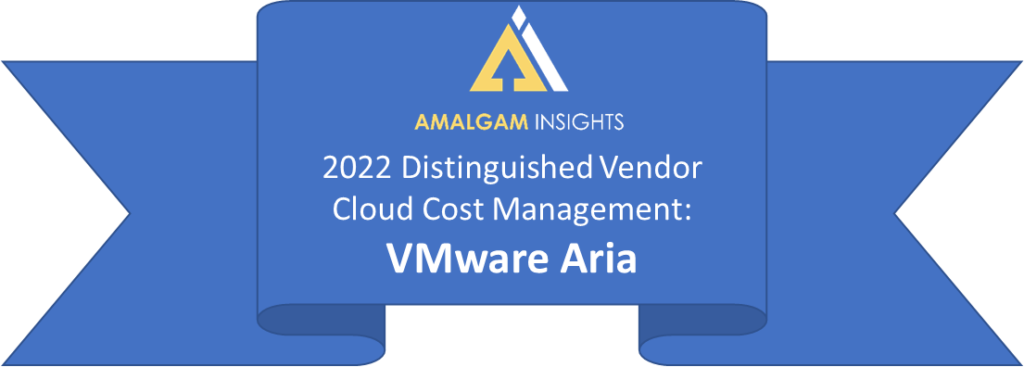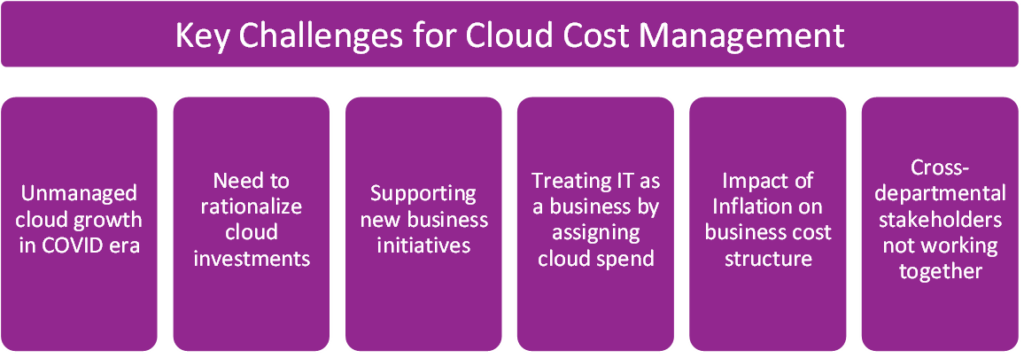
We Look at Two Ways in Which Providers Message Similarly to One Another
In the first two blogs in our series on cloud cost management, Amalgam Insights dove into why cloud costs are hard to manage and the challenges that impede many organizations from implementing disciplined cloud cost management and optimization. Those installments set the stage for this post, which lays out the value of relying on third-party software and services for cloud cost and lifecycle management. From there, we begin to explore the similarities observed among vendors, so organizations may spend less time and energy identifying the best fit(s).
Wait — Why Use a Vendor at All?
Any technology calls for proper oversight to ensure its best use and to assure optimal financial stewardship for the organization. To meet this need, dozens of companies provision software, and/or professional and managed services. When it comes to cloud cost management and optimization, these third-party offerings intentionally replace in-house counterparts. Surprisingly, a number of global organizations still rely on internal staff and piecemeal technologies to oversee and monitor their cloud environments.
Given the rapidly growing amount of cloud computing consumption, and the cost overages that easily accompany that usage, a homegrown approach must evolve, and quickly. Organizations must gain financial and operational visibility into their cloud environments. That starts by implementing a cross-departmental practice Amalgam Insights frames as Technology Lifecycle Management.
Figure 1: Technology Lifecycle Management
A Cautionary Note
Newcomers to the world of cloud cost control often are surprised to learn that using a cloud cost management and optimization platform may not inherently save substantial amounts of money on an ongoing basis.
In many cases, that is not, in fact, the overarching point.
Rather, the software will give IT — and finance and engineering — the data and recommended actions to make sure all cloud environments are running at their most optimal, are in use, and that they serve the organization’s needs.
Think of the matter this way: managing cloud computing does not mean cutting spending to the bone. Rather, organizations thrive when they support employees with the correct infrastructure and applications. (And, yes, that can call for putting more money into the cloud budget as tech serves as a driver for revenue creation.)
Many enterprises experience significant savings after first deploying a cloud cost management and optimization platform. Ttransforming an uncontrolled or poorly controlled environment into an efficient one will naturally lead to that outcome at first based on the IT Rule of 30. But as optimization continues, those gains fade because the platform is keeping the cloud environment at its most efficient.
Contrary to how it might sound, watching those gains disappear over time by creating an optimized environment actually is the goal. The right vendor will enable the organization to achieve that aim.
With that in mind, we now explore the first two ways in which many cloud cost management vendors end up sounding the same. The next blog will present more similarities among these providers. Amalgam Insights takes this approach so enterprise buyers are empowered to make their vendor selection processes more efficient and productive.
Sifting Through the Benefits Statements
With a couple of exceptions, cloud cost management and optimization vendors tend to make the same benefits statements to potential customers. Yet, once enterprise buyers understand those similarities, they will be better equipped to pinpoint important differentiators. In fact, later in this series, Amalgam Insights will publish a number of vendor profiles. The intent is that, by the time those go live, organizations will have the knowledge to create a matrix that will help narrow down the ideal choice.
Similarity 1: Continuous Optimization
Cloud management platforms must support continuous optimization as cloud performance and transactional activity accelerate, and as companies become increasingly susceptible to peak usage and other cost challenges associated with the flexibility of cloud computing.
The greatest benefits of an always-on optimization effort that pulls billing information directly from the cloud provider are the prevention of overspending and the right-sizing of consumption.
Unless a vendor delivers professional services rather than an actual platform, enterprises have the right to expect the cloud management software to perform constant right-sizing actions on a daily basis, or even more frequently, leading to the best use of the cloud environment. This capability has become table-stakes within any technology management platform and a vendor that overemphasizes continuous optimization may be lacking in other important areas.
Similarity 2: Automation and Artificial Intelligence
Continuous optimization relies on some level of automation, which is vital in a cloud cost management and optimization platform. After all, reducing human intervention is key to achieving more accuracy and efficiency. Given the massive volume of cloud computing billing and usage data, it is not humanly possible to manually check all of the data that comprise a cloud bill — at least, not without automation and an algorithmic-checking approach.
Note this important caveat: Most vendors will refer to their automation as “artificial intelligence,” largely because of the sophistication and modernization the term calls to mind. However, most of the automation in question is actually algorithmic processing with some aspects of basic regression to identify correlation and trends. Amalgam Insights sees that the majority of “AI” in this particular market typically lacks the feedback mechanisms, model training, and ongoing data science required to be considered modern AI. This isn’t necessarily an issue, as cloud computing usage is often driven by discrete and specific business needs or by the developer team’s needs. But the obvious advice here is to always follow up on AI claims, as there is no current standard on what constitutes AI in this market.
Enterprises would do well to inquire about how each platform automates data, and how it learns from recommended and implemented actions. If the software just imports information and populates fields, that — while handy — is rudimentary and standard.
Consider, as well, that a cloud cost management and optimization platform should remove the need for excessive manual manipulation, both to reduce the potential for human error and to foster any intelligence that will help the software learn from actions.
In the next installment, get more insight into more similarities among cloud cost management and optimization vendors.
Need More Guidance Now?
Check out Amalgam Insights’ new Vendor SmartList report, Control Your Cloud: Selecting Cloud Cost Management in the Face of Recession, available for purchase. If you want to discuss your Cloud Cost Management challenges, please feel free to schedule time with us.




